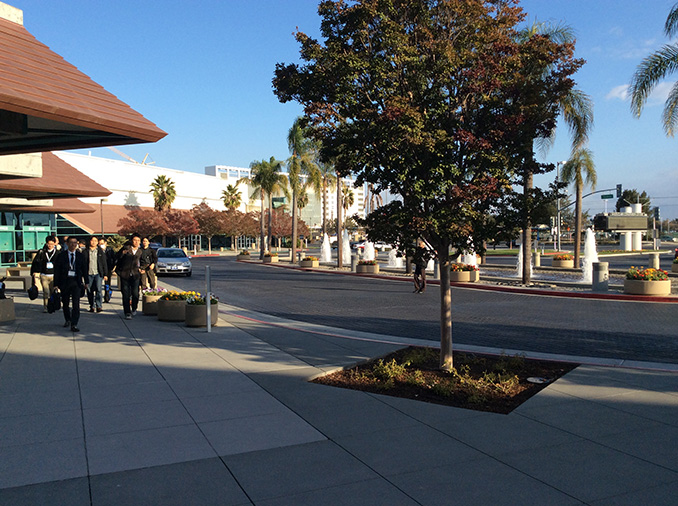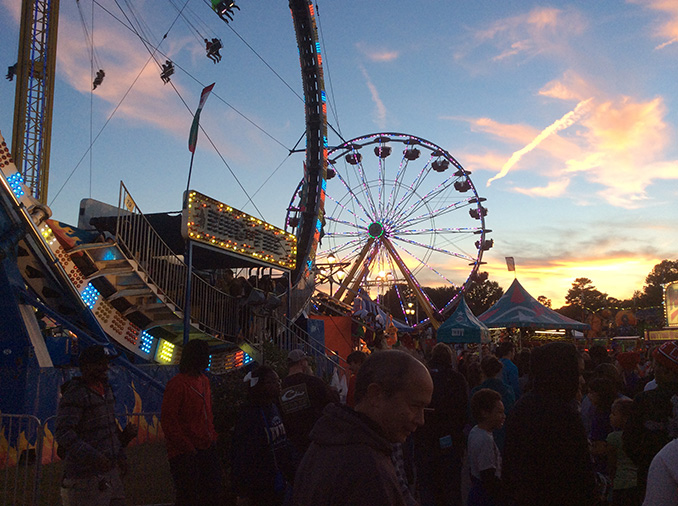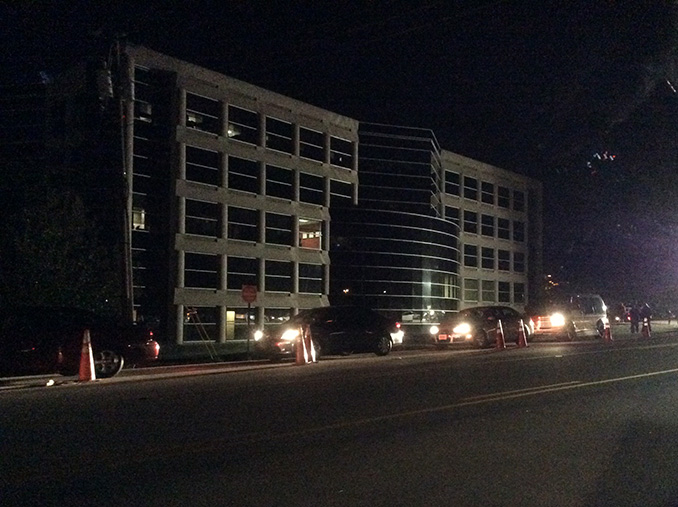The iPad Air Review
by Anand Lal Shimpi on October 29, 2013 9:00 PM ESTCamera
Front and rear facing cameras are necessary features on all modern, premium tablets. The usage model for a rear facing camera on a tablet is hopefully not as a primary image capture device but rather a convenient one. The idea being that if you’re on location somewhere using the iPad for work or play and need to quickly grab an image, having a decent rear facing camera can come in handy rather than having to put away your tablet, pull out your phone and then switch back afterwards.
Apple has improved its iPad imaging systems almost every single generation. That being said, the iPad Air is a bit of an exception to the rule as it retains the same rear camera sensor as the 4th generation iPad. We’re still talking about a 5MP sensor with f/2.4 lens, although the iPad Air now has a wider field of view with a 3.3mm focal length (identical to the original iPad mini).
| Rear Facing Camera Comparison | |||||||
| Sensor | Resolution | Aperture | Focal Length | ||||
| Apple iPad Air | 5MP | 2592 x 1936 | f/2.4 | 3.3mm | |||
| Apple iPad 4 | 5MP | 2592 x 1936 | f/2.4 | 4.3mm | |||
| Apple iPad 3 | 5MP | 2592 x 1936 | f/2.4 | 4.3mm | |||
| Apple iPad 2,4 | 0.7MP | 960 x 720 | f/2.4 | 2.0mm | |||
| Apple iPad mini | 5MP | 2592 x 1936 | f/2.4 | 3.3mm | |||
The rear facing camera tends to shoot at lower ISOs than the rear camera on the iPad 4. Since there’s no substantial change in the sensor or lens system however, the result is less noise but a darker image in low light situations. I suspect this might be more of a configuration default for the software layer driving the H6 ISP in Apple’s A7. Image quality is surprisingly good:
Even lower light shots come out fairly well:
Although obviously noise goes up appreciably once you get into really dark scenes:
I took a bunch of photos at the NC State Fair as well as on my trip out to Santa Clara following the iPad launch event in the gallery below.
Despite using the same ISP as the iPhone 5s, there’s no 10 fps burst capture mode on the iPad Air. Similarly there’s no slo-mo video recording mode either. The iPad Air does inherit the other benefits of the new H6 ISP however. Image capture is still insanely quick, which makes me wonder if the A7’s ISP also leverages that large on-die system cache.
| Front Facing Camera Comparison | |||||||
| Sensor | Resolution | Aperture | Focal Length | ||||
| Apple iPad Air | 1.2MP | 1280 x 960 | f/2.4 | 2.15mm | |||
| Apple iPad 4 | 1.2MP | 1280 x 960 | f/2.4 | 2.18mm | |||
| Apple iPad 3 | 0.3MP | 640 x 480 | f/2.4 | 1.8mm | |||
| Apple iPad 2,4 | 0.3MP | 640 x 480 | f/2.4 | 1.8mm | |||
| Apple iPad mini | 1.2MP | 1280 x 960 | f/2.4 | 2.2mm | |||
The front facing camera does see an improvement in sensitivity thanks to a larger sensor format. My understanding is this is the same sensor/lens combination as what’s in the iPhone 5s and 5c. Similarly to its implementation in the 5s, Apple seems to use the new front facing camera system to drive to lower ISOs and/or higher shutter speeds. You typically end up with a lower noise/sharper image, although sometimes there is a brightness/exposure tradeoff.
The other feature leveraged by the new front facing camera is the inclusion of a second microphone for noise cancellation. The goal here is to use the second mic to cancel out background noise and improve the quality of the audio you’re actually trying to record (presumably your voice during FaceTime for example). The impact is pretty noticeable. I ran an iPad 4 and an iPad Air side by side while playing a background track and have embedded the resulting videos below:
In the iPad Air sample video my voice comes across considerably clearer, as you’d expect given the Air’s second mic.
Video
Video capture settings look unchanged from the iPad 4. We’re still dealing with ~17Mbps High Profile videos from the rear camera and ~10Mbps Baseline Profile H.264 from the front camera.
Video quality out of both is pretty good for a tablet. In well lit scenes rear camera quality is definitely sufficient for sharing on the web.




















444 Comments
View All Comments
jonjonjonj - Tuesday, November 5, 2013 - link
but they are such an innovative company. look they released another iphone with a different size screen.nerd1 - Wednesday, October 30, 2013 - link
Kindle HDX actually uses magnesium unibody case.Kamus - Wednesday, October 30, 2013 - link
It is really only a "more limited device" just because it is a much newer plataform. Not because Apple is a super-open platform. Also, it is not plastic, but magnesium. And its also 130 dollars cheaper... It wouldnt hurt to get your facts straight before you drop those "knowledge" bombs on us.I would have bought one right now if the App Store had more developer support.
JarredWalton - Wednesday, October 30, 2013 - link
100% RGB gamut means nothing if the display isn't factory calibrated. Actually, it means highly oversaturated colors, as most content is designed for sRGB.Kamus - Wednesday, October 30, 2013 - link
Actually, 100% means it should fit the sRGB triangle perfectly. And the reason it does this, is in fact, because it IS factory calibrated. The amount of ignorance and bashing on the HDX is cringe inducing. All the info is right there on the amazon product page.KoolAidMan1 - Wednesday, October 30, 2013 - link
100% color gamut and being properly calibrated are two completely different things. You have no idea what you're talking about.Kamus - Thursday, October 31, 2013 - link
No... They are not "completley different things". There is grayscale calibration and gamut calibration. If they claim 100% sRGB it suggests that they are gamut calibrated. And again, the reason that i said that the HDX is factory calibrated is because it says so right there on the Amazon product page. All you did is the same thing everyone else is doing by sprouting nonsense with out even bothering in doing any research at all.Boissez - Wednesday, October 30, 2013 - link
One thing is marketing material an another thing is actual reality. By Ars Technicas measurements the HDX covers about 90% of sRGB - the iPad have been at 94% or over ever since the first retina iPad.youmenimum - Wednesday, October 30, 2013 - link
pixel density alone is not a quality to consider. In real comparison kindle tablets are not good at display compared to iPad. which one are you using by the way?Kamus - Monday, November 4, 2013 - link
It's been settled. The kindle fire HDX 8.9 has the best display on any tablet as of today:http://www.displaymate.com/Tablet_ShootOut_3.htm